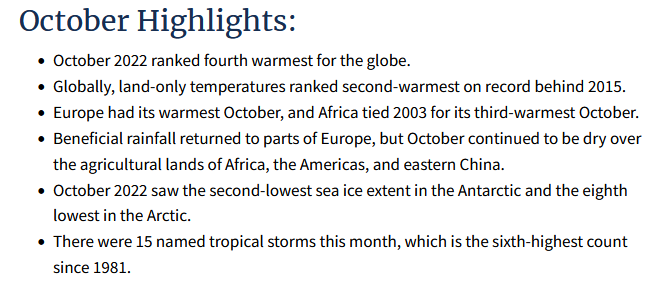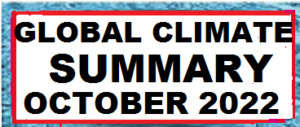Updated at 6:32 pm EST November 21, 2022: There has been a shocking major change in the 6 – 14 Day Outlook. I will review the NOAA discussions to better understand why. There are no discussions issued with the Saturday and Sunday 6- 10 and 8 – 14 day Outlooks but perhaps I should have looked at the maps coming off the printer/plotter. I usually pay more attention to the discussion released on Fridays with the Week 3 – 4 Outlook as I think they do a better job.
During the week, we provide 48-Hour reports which focus on the shorter-term predictions but also have links to all the partial-month outlooks.
Once a week we show many of the actual forecast maps not just provide the links to these maps. This makes it easier for the reader. Our report provides a separate forecast for Days 1 and 2, Days 1-5, Days 6 -10, Days 8 – 14, and weeks 3 and 4. We also include a next-day and 10-Day World Temperature and Precipitation Forecast. This provides information that is useful to readers in terms of planning their activities for the weekend and the next 28 days. Tomorrow and Monday I will update the article with more recent short-term forecasts.
From the Week 3 -4 Discussion:
Over the equatorial Pacific, La Niña conditions persist, with below normal sea surface temperatures (SSTs) and reduced tropical convection in all Niño regions. In contrast, convection currently exists over the Maritime Continent associated with the emergence of the MJO into RMM phase 5. Both GEFS and ECMWF ensemble forecasts depict the propagation of the MJO through phases 5, 6 and 7 (Maritime Continent to the Western Pacific) over the next two weeks. After this time, the ensemble spread indicates a great deal of uncertainty as to either the continued propagation or the decay of the MJO. Regardless, the tropical convection associated with this active MJO during the two weeks leading up to Week 3-4 will produce upper-level divergence that resides in a favorable location to interact with the subtropical jet exiting southeast Asia. This interaction will produce a source for Rossby waves capable of propagating downstream and impacting surface conditions over CONUS/AK during the Week 3-4 period. Statistically, this sort of propagation is associated with troughing over AK and ridging over CONUS at short leads. However, at Week 3-4 leads the pattern typically reverses with ridging over AK and trouging over CONUS, reminiscent of a negative PNA pattern. Further downstream, a negative NAO is typically observed. Thus, a pattern shift that projects onto the negative phases of both the PNA and NAO is favored to occur near the end of Week 2 or beginning of Week 3. Whether this shift actually occurs and its exact timing are uncertain, which leads to overall low confidence probabilities throughout this Week 3-4 forecast.
I have chosen not to try to explain all the factors that go into this forecast. If anyone is interested post a comment and I will reply to it.
When we publish on Friday night, it provides a 28-day view of the future. What is important is that this is a longer-term view than one that is typically available in the media and online.






